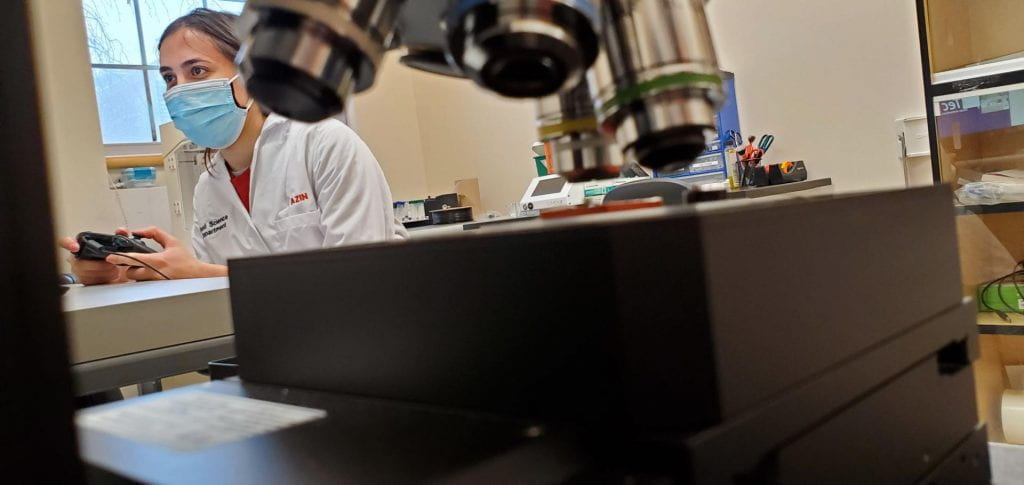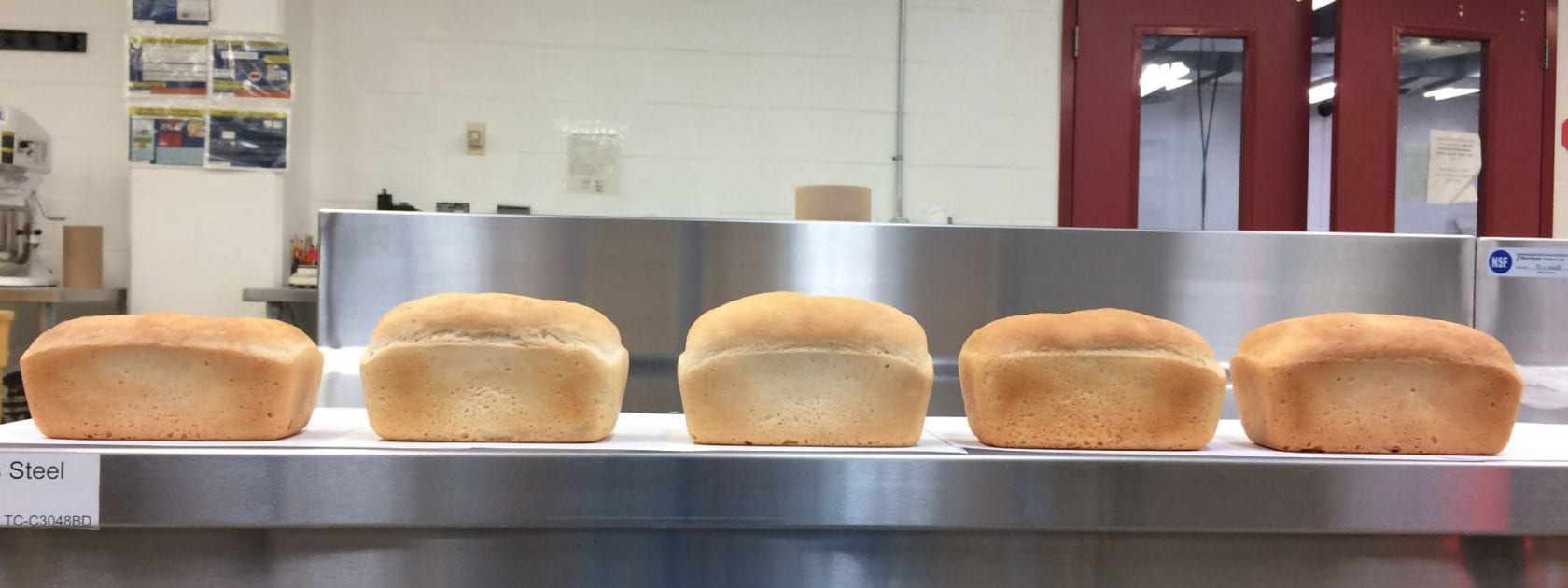Current Research Projects
How do gluten proteins build structure and impact cereal product quality?
Gluten proteins have unique network forming properties, which impact cereal processing and cereal end product quality. In bread making applications, the properties of this gluten network are a main factor in dough handling properties and bread quality. In today’s commercial breads, the properties of this network are optimized by the addition of chemical and/or enzymatic additives. In other cereal products, gluten network formation is not as pronounced and, sometimes, not even desired. The structure of gluten during cereal processing, the properties a gluten network should display for optimal cereal product quality, and the effect of certain quality-improving additives on a molecular and macromolecular scale, remain under debate. However, these insights are needed in order to meet the needs of the cereal sector such as dealing with inherent flour variability, suboptimal gluten performance and the production of high quality gluten free products. This research combines classical protein characterization techniques with more innovative techniques to resolve protein structure, interactions and functionality during processing and storage of cereal products.
How can we use the unique properties of cereal biopolymers to produce highly performant nano- and microstructures?
The fortification of food products with bioactive molecules usually poses specific challenges with regard to ensuring the stability and functionality of the bioactive molecules in a complex food matrix, during food processing and upon ingestion. Encapsulation of these labile bioactive molecules, in order to protect them from harsh conditions, is one of the possible strategies to make food fortification more efficient. Cereals contain a variety of biopolymers (i.e. proteins, starch and non-starch polysaccharides), that all have their specific properties and can be used to produce nano- or micro-scale systems that can be used as carrier and delivery systems for these bioactive molecules or to build customizable food structure. This research specifically focuses on liquid anti-solvent precipitation as a simple, yet versatile technique to produce biopolymer-based nano- or micro-particles. Unraveling molecular structures and interactions are key to a better understanding and engineering of these systems for specific applications in the food sector.

How can we increase the stability and quality of frozen dough products?
The demand for frozen dough and partially baked bread products is expanding due to the consumer quest for convenience and freshness. However, freezing of unbaked or parbaked bread is known to induce quality deterioration in the macrostructure and texture of the final products. The incorporation of fibre in these products may improve the structural and textural stability of these products during freezing and subsequent thawing while also contributing to the recommended intake of dietary fibre in our daily diet. This project focuses on ‘locally grown fibres’ to improve the cereal products. Molecular characterization focusing on structures and interactions between the added fibre and the molecules making up the cereal product matrix enables us to better understand, but also engineer healthy, convenient and fresh cereal products.
How can we unlock more functionality and health benefits from our daily produced grain products?
Wheat-based products are a major part of our current diet. Therefore, it is key to unlock and fully exploit the health benefits that are contained in grains. This project focuses on coloured grains and on postharvest processing of grains to alter their nutritional value and increase the availability of health-improving molecules. The effect of grain selection as well as postharvest processing is looked at on both a fundamental (molecular interactions and structures) as well as a more applied (processing and end product quality) level.
How can we improve the functional properties of bean-derived ingredients?
Bean-derived ingredients are gaining traction as a highly functional and nutritional ingredient for the bakery sector. However, perceived gastro-intestinal discomfort and off-flavours associated with the inclusion of these ingredients in a bakery recipe have slowed down their utilization. This project is focusing on innovative processing of bean flour and bean-derived ingredients to alter/improve the functionality and reduce the negative aspects associated with their inclusion in bakery recipes.


Past Research Projects
Sept. 2017 – Sept. 2019 – How can we improve the functional properties of spray-dried whey protein powder?


Research Capabilities
Analytical Facility
The analytical research facilities are well-equipped to study cereal biopolymer properties ranging from chemical composition, molecular weight distribution and structure, intermolecular interactions to their distribution in complex food matrices. For more information, please contact us.
Pilot Bakery Facility
The fully equipped bake lab is an integral part of our research activities. The bake lab is used for research-scale production of a variety of bakery products ranging from bread loaves, cakes, cookies and crackers. Cereal flour, ingredients and final product characterization and quality assessment are part of the daily research activities. The lab is also equipped with small scale dehulling, debranning, milling, grinding and sieving capabilities. For more information, please contact us.






